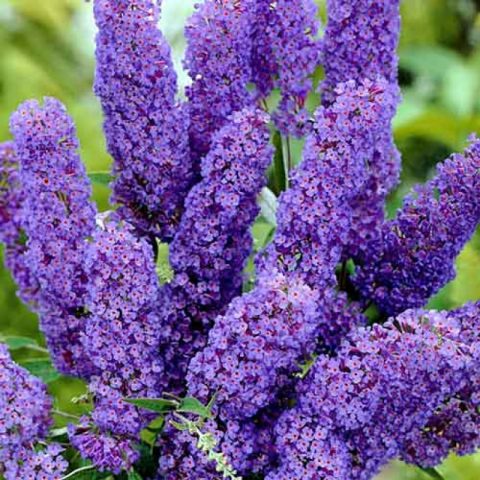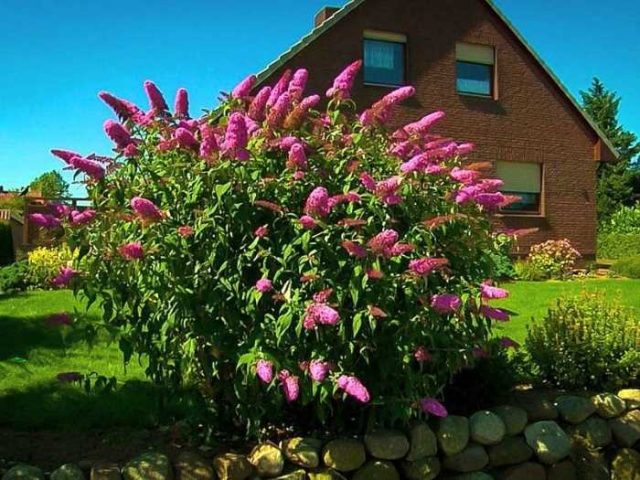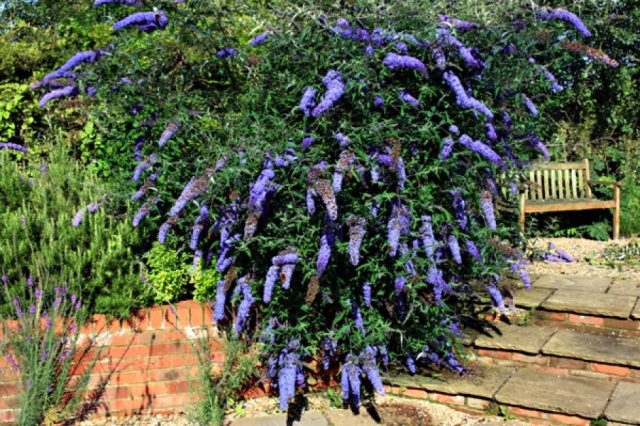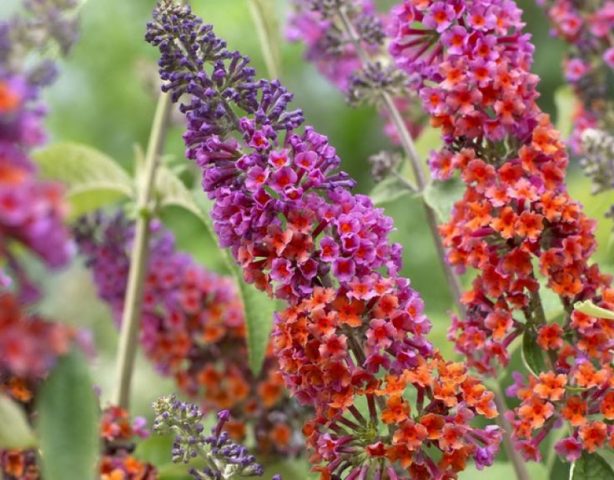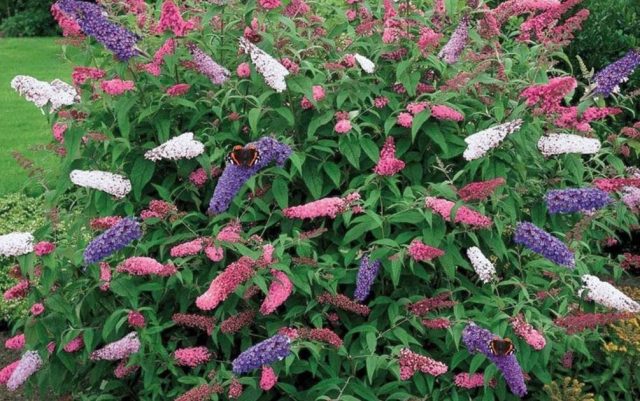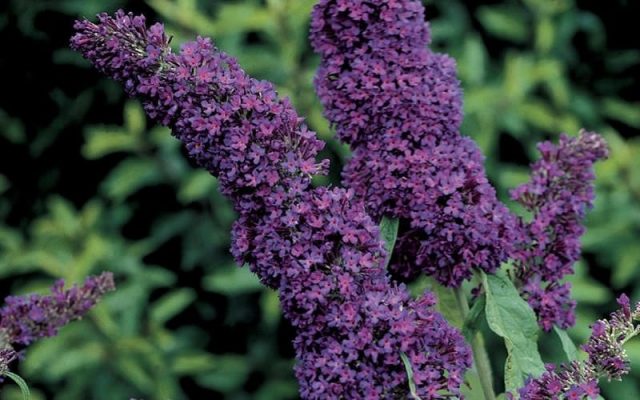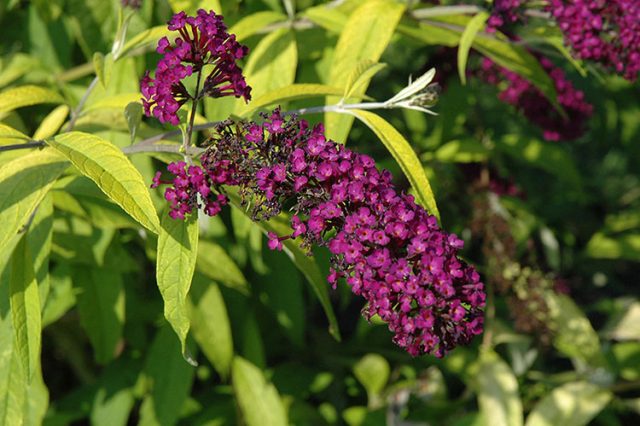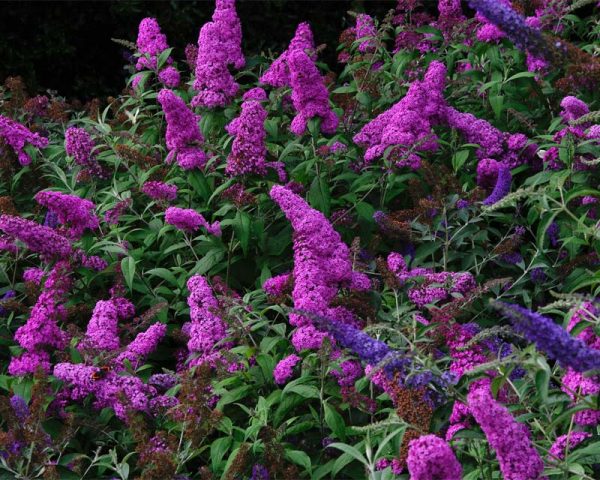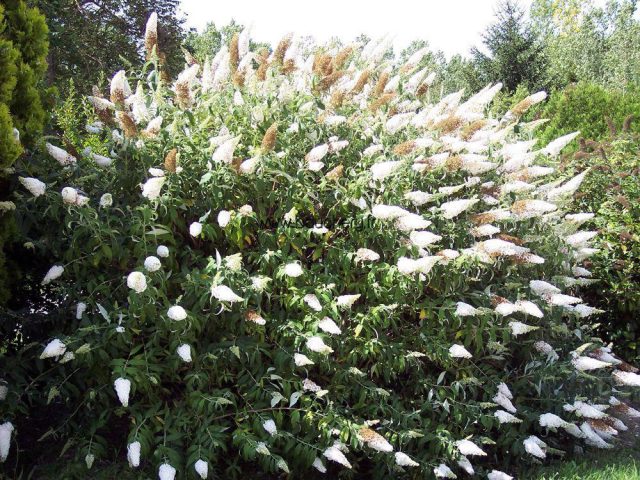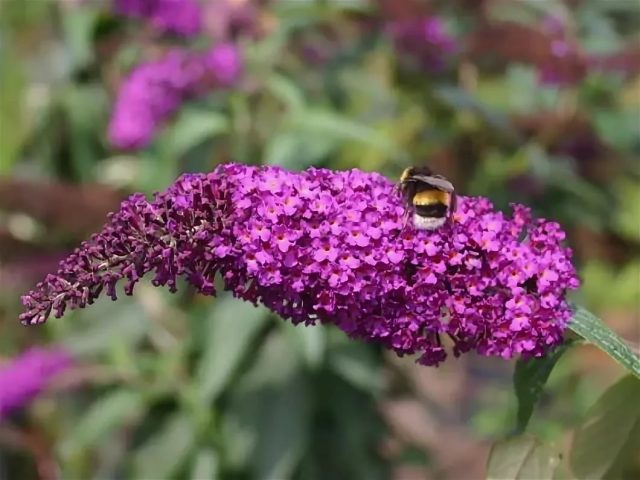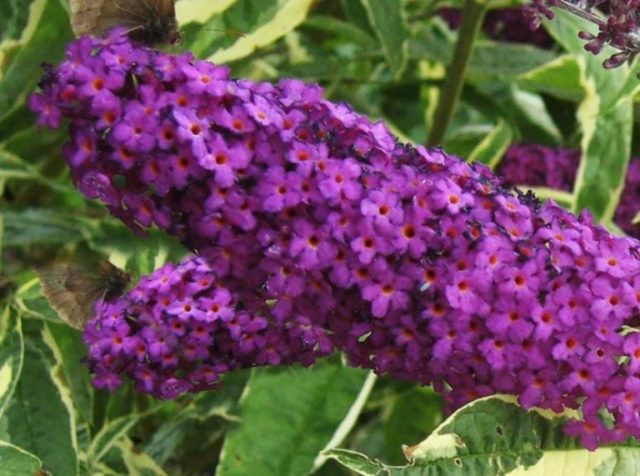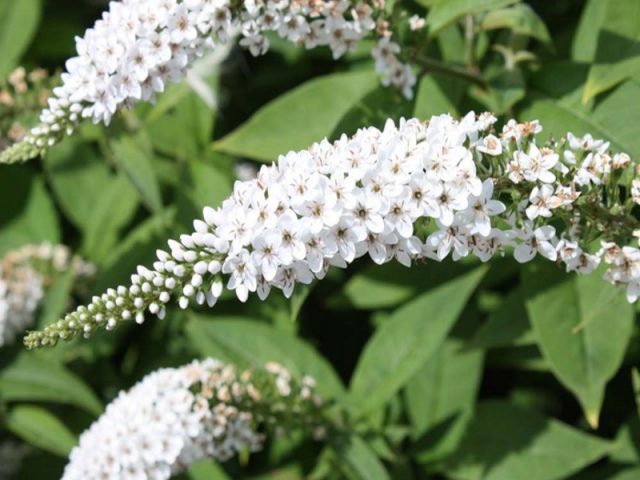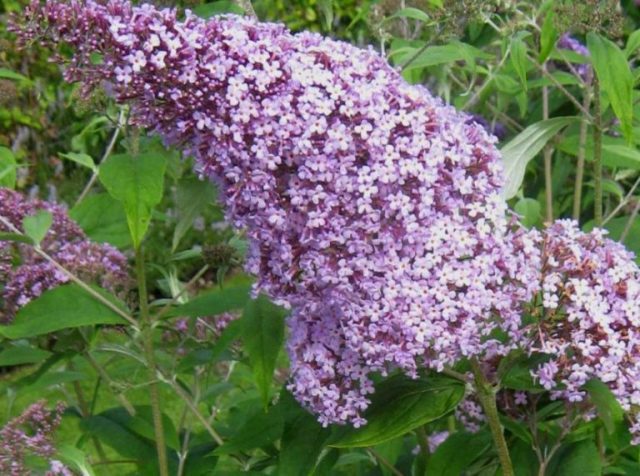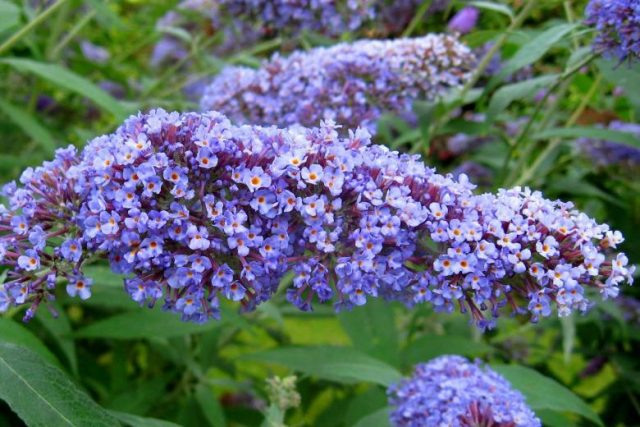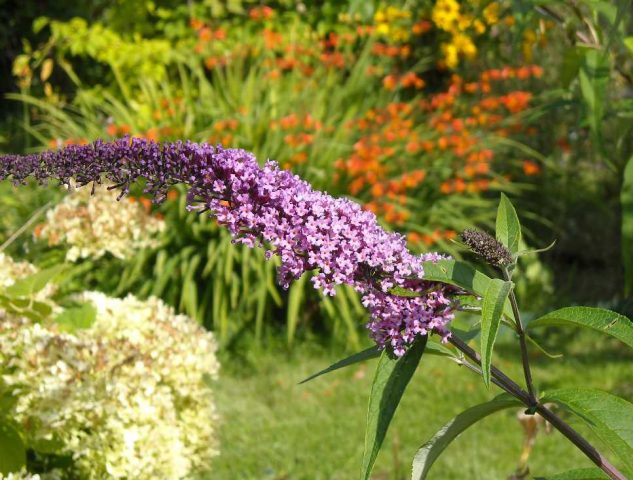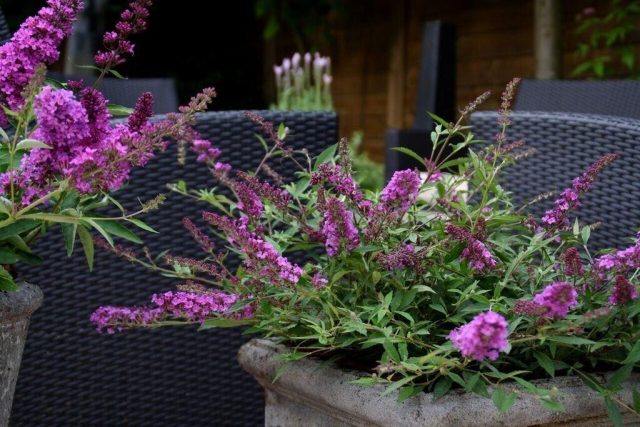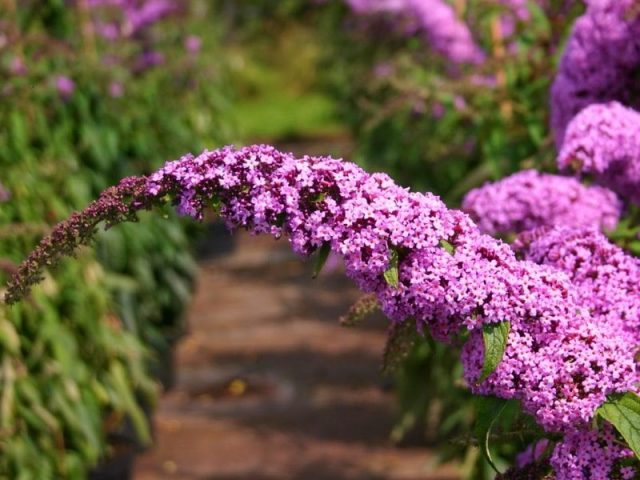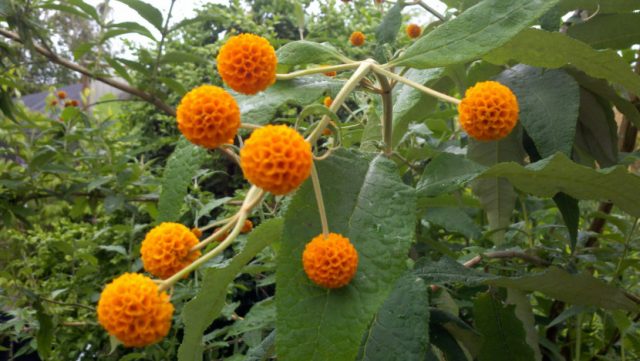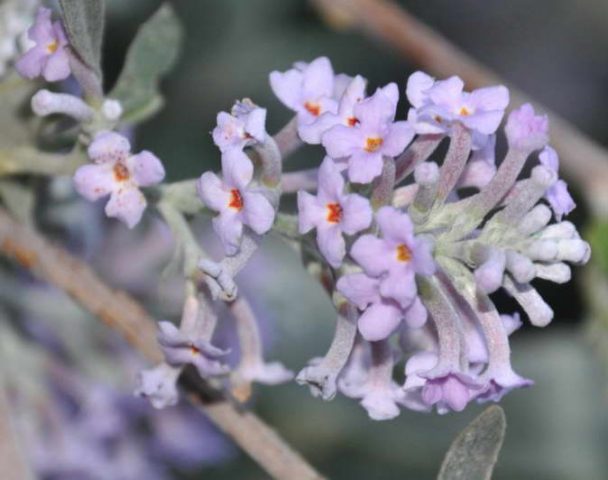Content
- 1 General description of the budley
- 2 Types and varieties of budleys with photos and names
- 2.1 Budleya David
- 2.1.1 Pink Delight
- 2.1.2 Empire Blue
- 2.1.3 Flower Power (Flowe rPower)
- 2.1.4 Tricolor
- 2.1.5 Ile de France
- 2.1.6 Adonis Blue
- 2.1.7 Santana
- 2.1.8 Harlequin
- 2.1.9 Nanho Purple
- 2.1.10 White Profusion
- 2.1.11 Silver Anniversari (Silver Anniversary)
- 2.1.12 African Queen
- 2.1.13 Little Nugget
- 2.1.14 Dreaming White
- 2.1.15 Gulliver
- 2.1.16 Darts Papillon Blue (Dart's Papillon Blue)
- 2.1.17 Moonshine
- 2.1.18 Wilson
- 2.1.19 Magenta Munchkin
- 2.1.20 Free Pettite Blue Heaven
- 2.1.21 Free Pettite Tutti Frutti
- 2.1.22 Free Pettite Dark Pink
- 2.1.23 Lavender Cupcake
- 2.1.24 Purple Prince
- 2.1 Budleya David
- 3 Spherical budley
- 4 Alternate-leaved buddleya
- 5 Japanese budley
- 6 Budley Fallow
- 7 Conclusion
Photos and descriptions of the budley shrub can be found in many options - the plant is represented by several species and countless varieties. To figure out which shrub is worth planting on your own plot, you need to study the varieties of budlei and their distinctive features.
General description of the budley
The budlea shrub is a plant of the same genus from the Norichnikov family. In the wild, the plant can be found in the subtropical zone - in South Africa and South America, in East Asia. At the same time, ornamental trees and shrubs of buddley are planted all over the world, including in the middle lane.
The appearance of the shrubs is quite recognizable. Buddleya can reach 4 m in height, has large oval leaves with taper at the ends. The plant blooms with small flowers, collected in large inflorescences, spikelets, one inflorescence can reach 40 cm or more in length. Most often, budleia flowers are colored pink, purple and blue, but there are also yellow and white shades.
The plant is propagated by seeds and cuttings, but tuberous buddley is practically not found. Growing a shrub from seeds is a rather complicated process. As you can see in the photo of budley seeds, they are very small in size and therefore often do not germinate if they are improperly planted in open ground. Most gardeners prefer to purchase ready-made seedlings or seedlings in order to minimize the possibility of mistakes and not waste time looking for bulb buds.
It is noteworthy that most species and varieties of plants bloom in July and continue to delight with their beautiful appearance until October. Gardeners often look for Canadian buddley lilacs, as the outwardly shrub resembles a tree from the Olive family. However, in botany, the Canadian buddleya does not stand out as a separate variety, although the ornamental shrub itself is popular in Canada.
Types and varieties of budleys with photos and names
In total, there are over 100 species of shrubs in the world. However, for decorative purposes, only a few popular varieties and their many varieties are usually used. Some of the budley varieties are very similar to each other, others have fundamental differences.
Budleya David
The ornamental trees and shrubs of the buddlea varietal, or buddleya of David, are most popular in temperate climates because the buddlea of david is more hardy than other varieties. Best of all, the buddlea, which has spread around the world from China, feels warm, but it can tolerate frosts on average up to -20 ° C and takes root well in the middle lane.
The size of David's budley most often reaches about 3 m, and it grows in height by about 50 cm per year. The shrub has a lifespan of about 10-15 years, all this time the buddleya continues to bloom profusely. The branches of the shrub are spreading, thin and drooping, the leaves are opposite and have a classic oval shape with pointed ends. Buddleya David blooms from July to late September.
Decorative varieties of this type are numbered in dozens - they differ among themselves in the height and size of the crown, the shape of the inflorescences and shades.Competent selection of varieties allows you to give the summer cottage an incredibly beautiful look in the fall.
Pink Delight
David's budley variety Pink Delight is a short shrub reaching 2-2.5 m in height and width. According to the photo and description of the Pink Delight budley, the shrub of this variety has elongated and pointed leaves, and the color of the upper part of the foliage is dark green, and the lower part is white-felt. The inflorescences of the David Pink Delight budley are classic, spike-shaped up to 40 cm in length, and the flowers are pink in color and emit a pronounced honey aroma.
The shrub blooms from July to September. Budleya Pink Delight loves sunny places and fertile calcareous soils and has an average winter hardiness up to -23 ° C.
Empire Blue
David's Buddley Empire Blue is a beautiful and sprawling shrub that can grow up to 2.5 m in height and width. Spike-shaped inflorescences usually do not exceed 30 cm in length, their color is rich blue-violet. Buddleya Empire Blue emits a rich honey aroma, flowering occurs from July to September and lasts 1-1.5 months.
In the photo of David Empire Blue's buddley, you can see that the inflorescences of the variety can be either drooping or erect. Pointed lanceolate leaves have a dark green color on top and white-tomentose with a light edging below.
The plant tolerates cold temperatures down to -20 ° C, however, the branches of the variety in winter become almost completely frozen, and with the onset of spring, buddleya actively releases new shoots.
Flower Power (Flowe rPower)
The David Flower Power buddley variety is also known among gardeners under the name Bicolor. This is explained by the fact that from July to September buddleya blooms with beautiful spike-shaped inflorescences with dark orange flowers and deep blue buds. In length, such inflorescences usually reach 25 cm, a sweet honey smell emanates from them.
Buddleya Flower Power reaches up to 1.8 m in height, the leaves are standard - dark green on the upper surface of the leaf and whitish with the edge below. The variety tolerates frosts well down to -23 ° С, it feels best in well-lit places with protection from the wind.
Tricolor
An interesting variety is Tricolor buddleya - the variety has a very unusual appearance. The shrub, reaching 2 m in height and width, blooms in three different shades at once - white, red and dark purple. In the garden, the variety looks extremely impressive, which is the reason for the high demand for Tricolor buddley among summer residents.
The flowering of the variety falls on the traditional July-September, the inflorescences have a spike-shaped shape, they can be directed upwards or slope towards the ground. Buddleya David Tricolor is a fairly new variety, but it has great prospects.
Ile de France
The Ile de France buddlea shrub is a plant that can grow up to 2 m in height and about 2.5 in width. The variety has a classic honey aroma, the inflorescences are collected in long spikelets, but they are distinguished by their rich lilac-purple color.
The flowering period of David Ile de France buddley falls in July-September. The shrub loves light and warmth, but with proper care it can tolerate frosts down to -23 ° C.
Adonis Blue
An unusual blue-purple shade of inflorescences is possessed by the buddleya variety of David Adonis Blue. Usually buddleya grows lower than most varieties - only up to 1.2-1.5 m. The leaves of the plant are the same as those of other varieties - lanceolate with a dark green color on top and whitish on the bottom. Flowering times for the variety are also standard - from the beginning of July to the end of September.
Buddleya Adonis Blue does not tolerate severe frosts and can freeze slightly in winter. However, after spring pruning, the rapid growth of new shoots begins, and in the same year the variety pleases with abundant beautiful flowering.
Santana
This variety is also known as the Purple buddleya, as it is easy to understand, the name comes from the bright purple shade of dense long inflorescences. In the photo of David Santana's buddley, you can see that the crown of a low shrub, reaching an average of a couple of meters, is lush and round, and erect branches alternate with drooping ones.
Buddleya David Santana blooms from mid-summer to the end of September, her flowering period is quite long - sometimes more than 45 days. When frozen, the variety shows good resistance, although it is better to additionally cover it from frost.
Harlequin
A small tree called buddley Harlequin can reach only about 1.8 m in height, the crown width is also small - up to 1.5 m.The shade of the inflorescences of this variety is blue-violet, and the spikelets themselves are relatively small - up to 30 cm long. A distinctive feature of the variety is also the decorative coloration of bright green leaves - along the edges they have a light cream border.
Harlequin buddleya blooms less than other varieties - from August to September. The frost resistance of the shrub is rather low, so it needs to be properly insulated for the winter.
Nanho Purple
Variety of purple buddley Nano differs from others primarily in the very large spikelets of inflorescences. They can reach 50 cm in length - much more than other varieties. The shade of flowers in the variety is bright purple, and it usually blooms from the end of July to September.
Since the buddleya of David Nano Purpl does not show the highest winter hardiness, it is better to wrap it up for the winter.
White Profusion
White budley variety White Profusion differs from others primarily in its snow-white inflorescences with a sweet pleasant aroma. In height and volume, the shrub is similar to other varieties; on average, the plant reaches 2 m in width and height. The length of the inflorescences of the White Profusion buddlea can vary and range from 20 to 40 cm.
The variety blooms in traditional terms - in July, August and September, the total flowering duration can be up to 1.5 months. Buddleya David White Profusion is distinguished by its increased thermophilicity - frosts down to -20 ° C can lead to serious freezing of the shrub.
Silver Anniversari (Silver Anniversary)
A very beautiful variety is the Silver Anniversary buddley. The shrub is characterized not only by abundant fragrant white inflorescences, but also by an unusual shade of foliage. The bushes of the plant have silvery foliage, so the variety is highly valued in landscape design. In addition to the unusual color, the shrub is distinguished by its compact size, on average 1.5 by 1.5 m, and a neat rounded crown.
The winter hardiness of this variety is average, the plant tolerates frosts up to - 23 ° C, but requires winter shelter.
African Queen
The variety got its name for the shade of the inflorescences - the buddleya of David African Queen blooms with dark purple long panicles. Flowering continues for a long time - from early summer to late September. African Queen Buddley is also distinguished by a tall height of 2-3 m and a very rich fragrant aroma with honey notes.
The variety tolerates winter in the middle lane well, although it requires covering. In spring, it is recommended to prune the shrub to form a more graceful silhouette.
Little Nugget
The Little Nugget buddley variety belongs to the stunted, since it rarely exceeds 90 cm in height, and grows in width only up to a meter. However, at the same time, miniature shrubs are actively used in landscape design when forming flower beds and low hedges. The variety is also suitable for home breeding or for growing on a balcony or terrace.
You can recognize the Little Nugget not only by its compact size, but also by its tall dark purple inflorescences of a standard spike shape.
Dreaming White
Another representative of low decorative varieties is the Dreaming White buddlea, which grows on average up to 90 cm and can reach about 1 m in diameter. From July to September, a beautiful shrub produces lush snow-white spikelets of inflorescences and decorates not only gardens, but also flower beds, verandas and balconies.
Winter hardiness of a miniature shrub is not very high, although it tolerates frosts down to -20 ° C well. But for the winter, the plant must be insulated, and, if possible, transferred to a warm, closed room.
Gulliver
The buddley Gulliver variety, a compact shrub, rarely exceeding 1 m in height, can become a real decoration of the garden. Despite its small size, the plant has very large and lush inflorescences - lilac spikelets reach 50 cm in length.
The variety emits a pleasant aroma, can be used to create hedges or garden ensembles. The flowering of the variety begins in mid-summer and lasts until September; for the winter, the shrub needs to be warmly covered.
Darts Papillon Blue (Dart's Papillon Blue)
The spreading shrub of this variety usually reaches 1.5 m in height and has upright central and slightly drooping lateral branches. The leaves of the buddley Darts Papillon Blue have a standard lanceolate shape, but reach only about 10 cm in length.The plant blooms from July to mid-autumn, lush cone-shaped spikelets have a rich lilac color with orange eyes inside each flower.
The variety tolerates cold quite calmly, but since its shoots are frozen in frost, it is recommended to remove them in autumn - this stimulates the growth of new branches.
Moonshine
The photo and description of the buddley by David Munshine classifies this variety as compact, on average, the shrub grows up to 1.5 m and reaches about 90 cm in width. The spikelets of the inflorescences have a purple-pink hue, the length of some of them is only about 20 cm. The flowering of the variety occurs in July, August and September, and from the point of view of winter hardiness, the plant can be grown in the middle lane, subject to shelter for the winter.
Buddleya David Moonshine is distinguished not only by beautiful flowers, but also by unusual leaves with a yellow-green color of the upper part. Due to this, the variety is often used in landscape design.
Wilson
The variety is one of the so-called garden forms of ornamental trees and shrubs of David's buddley. The plant is characterized primarily by its unusual arched branches, which clearly distinguish it from other plants in the garden.
Flowering of a low shrub occurs quite late, from mid-August to September. But at the same time, Wilson's buddley becomes a real decoration of the site due to its long lilac-pink inflorescences, some of which can reach up to 75 cm.
Magenta Munchkin
The very short Magenta Munchkin buddlea rarely exceeds 90 cm in height, but attracts attention thanks to its beautiful inflorescences. The flowering of this variety is distinguished by a dark and rich reddish-purple hue, the Magenta budley variety blooms from July to October with its first frosts.
Free Pettite Blue Heaven
Free Pettite and its varieties belong to the category of dwarf buddlea, the shrubs rarely exceed 65-70 cm in height.Free Pettite Blue Heaven buddleya blooms from July to October, producing amazingly beautiful purple-blue flowers with a sweet aroma.
The plant is highly sensitive to cold weather and requires reliable shelter for the winter. Due to its miniature size, this variety is often used not only in the garden, but also on terraces, balconies and even window sills.
Free Pettite Tutti Frutti
Tutti Frutti buddley David from the compact Free Petit series is also characterized by modest dimensions - up to 65 cm in width and height. The plant has a spherical shape, blooms in July-October with small but lush bright pink inflorescences.
Free Pettite Tutti Frutti buddleya is often planted not only in flower beds, it is grown in planters and large pots on balconies and verandas. It is also convenient to keep a plant of this variety indoors because the miniature bush can be removed indoors for the winter. The plant is very thermophilic and does not tolerate cold temperatures below -20 ° C.
Free Pettite Dark Pink
Another representative of the series of compact shrubs is the Free Pettite Dark Pink buddlea, which usually does not grow taller than 65 cm. A distinctive feature of the variety is a deep pink shade of flowering spikelets, and the flowering period for this variety lasts from early summer until the first frost.
The miniature buddleya Dark Pink often grows in pots and pots and can be seen on balconies and outdoor verandas. Also, the shrub is planted in heaps in gardens, forming dense ensembles. The plant tolerates winter with frosts down to - 23 ° С, but it needs insulation.
Lavender Cupcake
The beautiful low shrub of Lavender Cupcake buddleia is easily recognizable by its lush purple inflorescences with dark orange eyes at the center of each flower. The plant rarely exceeds 1.1 m in height and belongs to the compact category. The leaves of the variety are ordinary, dark green lanceolate, the period of lush flowering covers the period from July to October.
Lavender Cupcake can withstand frosts down to -25 ° C in the conditions of the middle zone, although its shoots most often freeze. However, with the beginning of the spring growing season, new branches begin to actively grow, therefore, the annual flowering occurs within the biological time.
Purple Prince
The flowering perennial buddley Purpl Prince belongs to rather tall varieties, the plant can reach 2.5 m in height. The shade of inflorescences in this variety is purple with purple splashes, and not only honey, but also vanilla notes are felt in the aroma.
The Purpl Prince variety grows equally well both in the sun and in partial shade, loves light drained soils and a warm climate. However, the plant also tolerates frosts well, if the temperature does not drop below - 25 ° C, then with the arrival of spring buddlea releases new shoots instead of frozen ones. The flowering of the variety occurs from mid-summer to late autumn.
Spherical budley
In addition to the buddleya of David, or Buddleja Davidii, there are other types of this plant. In particular, they include a spherical buddleya - a shrub whose inflorescences are not elongated cone-shaped, but rounded. Under natural conditions, the species is capable of reaching up to 5 m in height, but with artificial breeding, the spherical buddley often grows only up to 2.5-3 m.In addition to the shape of the inflorescences, the species is easily recognizable by the yellow or bright orange shade of the flowers.
Yellow buddleya is cultivated mainly in warm regions of Russia, in the Caucasus and Crimea. In the middle lane, it is rarely found, since it tolerates frost very badly. The shrub blooms in early summer, June or July, and lasts only about 20 days.
Sungold
One of the most famous varieties of this species is the Sangold budlea, bred by crossing the budlea of David and the globular. The hybrid plant has all the main characteristics of a spherical shrub, but the size of the yellow-orange round inflorescences is very large - almost the same as that of David's budleia.
The hybrid blooms from mid-summer to autumn, unlike the usual spherical budley, it has good winter hardiness and is suitable for breeding in the middle lane.
Alternate-leaved buddleya
Another species that is often found in the decorative landscaping of the middle lane is the alternate-leaved buddley. The species has several characteristic features, first of all, they include the next arrangement of leaves, to which the shrub owes its name.
The alternate-leaved budleia is also distinguished from other species by the unusual shape of the crown - the branches of a tall shrub lean to the ground, which makes the plant resemble a weeping willow. During the flowering period, which lasts an average of 25 days in early summer, the branches are covered with densely arranged spherical inflorescences of a delicate purple hue. The species tolerates frosts up to - 28 C very well, due to which it is popular in temperate climates.
Japanese budley
Japanese buddleya is a type of flowering shrub, common mainly in Japan and other Asian countries with warm climates. The plant reaches a height of 3 m; in May and June, dense cone-shaped inflorescences of a lavender color up to 20 cm long appear at the ends of young shoots.
The Japanese variety of the plant is characterized by very rapid growth, however, the winter hardiness of the shrub is low, at temperatures below -15 ° C the buddlea can freeze. In addition, the decorative characteristics of the plant are average; for these reasons, Japanese buddleya is rarely used in landscape design in Russia and Europe.
Budley Fallow
An interesting ornamental plant species is Buddleja Fallowiana, or Buddley Fallow. In appearance, the plant is very similar to the buddley of David, but it has fundamental differences. First of all, the foliage of the Fallowiana species is not green, but grayish on the top and silvery on the bottom. Thin lanceolate leaves on the underside are covered with the usual edging for a budlea, however, Fallow's branches are also pubescent.
Budleia Fallow blooms from late summer to autumn, the plant produces lavender-blue or white fluffy inflorescences at the tops of young shoots. The species has an average winter hardiness, and the plant tolerates frosts well, but in Russia it is less popular than buddleya and David.
Conclusion
Photos and descriptions of the budlea shrub are found in dozens of different options, since this plant has a lot of species and varieties. A careful study of the varieties allows you to choose the most beautiful and promising ornamental plant for your site.
